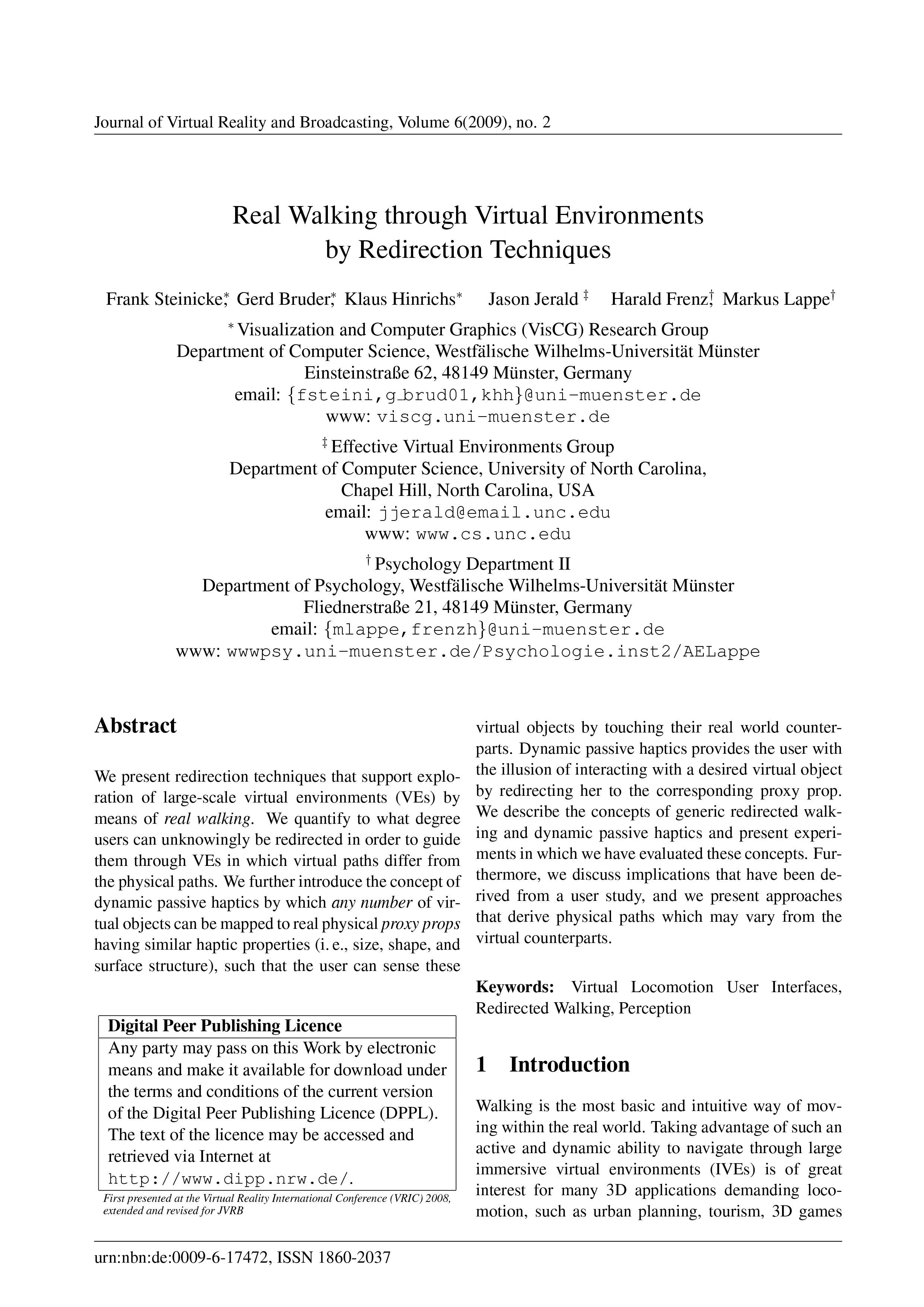Real Walking through Virtual Environments by Redirection Techniques
DOI:
https://doi.org/10.20385/1860-2037/6.2009.2Keywords:
Perception, Redirected Walking, Virtual Locomotion User InterfacesAbstract
We present redirection techniques that support exploration of large-scale virtual environments (VEs) by means of real walking. We quantify to what degree users can unknowingly be redirected in order to guide them through VEs in which virtual paths differ from the physical paths. We further introduce the concept of dynamic passive haptics by which any number of virtual objects can be mapped to real physical proxy props having similar haptic properties (i. e., size, shape, and surface structure), such that the user can sense these virtual objects by touching their real world counterparts. Dynamic passive haptics provides the user with the illusion of interacting with a desired virtual object by redirecting her to the corresponding proxy prop. We describe the concepts of generic redirected walking and dynamic passive haptics and present experiments in which we have evaluated these concepts. Furthermore, we discuss implications that have been derived from a user study, and we present approaches that derive physical paths which may vary from the virtual counterparts.
Published
2009-02-03
Issue
Section
VRIC 2008





